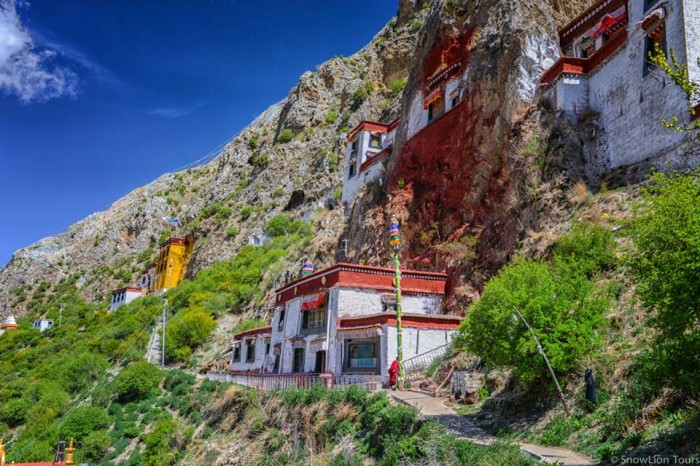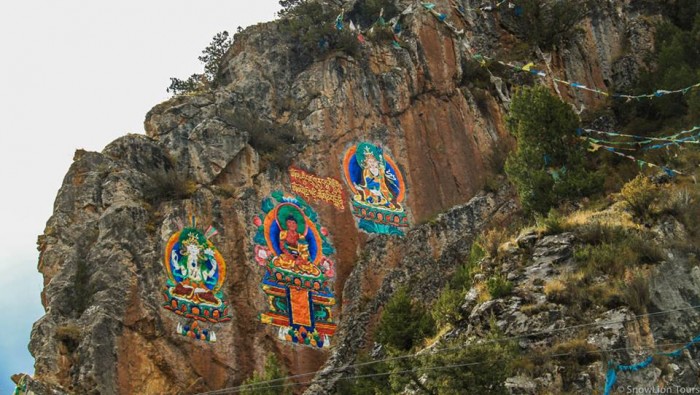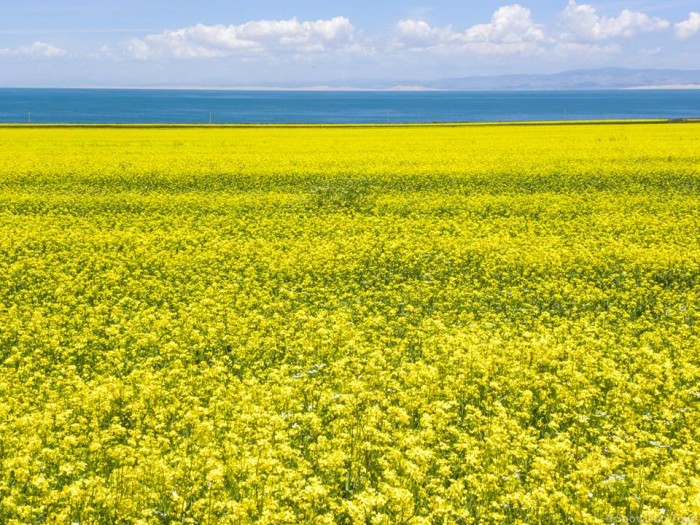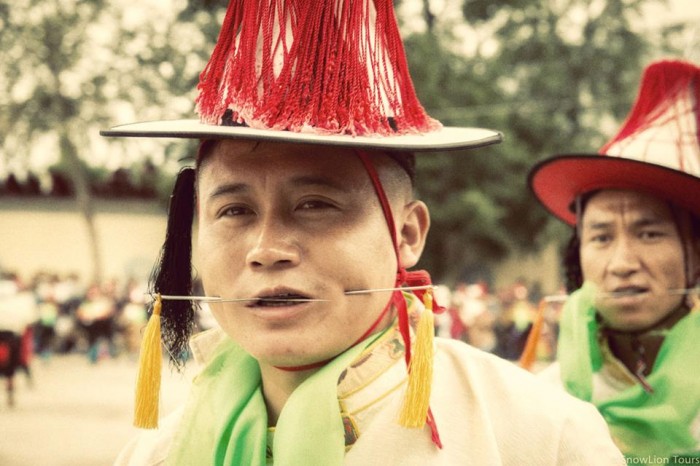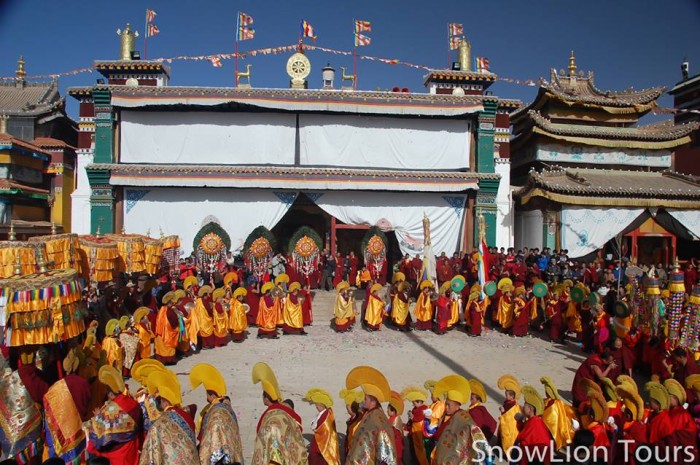A Cultural and historic adventure to the Qinghai Tibetan Plateau
Explore the most highlighted tourists sites in Qinghai Tibetan Plateau. Drive from one of the largest monastery in Tibet, Then drive along the fields of yellow rapes to reach the incredible Qinghai Lake. Vist Rebkong artist village and monasteries and then take the well known Qinghai Tibet Railway to Lhasa, the capital city of Tibet and visit Potala Palace, Jokhang Temple, great monasteries, meditation caves.etc.
Highlights
- Xining: Qinghai Lake, Rebkong Artist village
- Qinghai Tibet Railway
- Lhasa: Potala Palace, Monasteries and meditation caves
- Chinese and Tibetan Culture experience
Details
- 10-day trip begins in Beijing and ends in Lhasa, Tibet
- 8 nights in hotels
- Altitude from 1800-3600m
Tour Costs
- E-mail us for an exact quote
- See Prices & Booking for more information
Departures
- open year-round
Day 1: Arrive Xining and transfer to your hotel
Welcome to Xining. If you arrive early, we will start the trip on this day. I
Day 2. Around Xining sightseeing
Highlights: Kumbum Monastery, Qinghai Lake and Gui’de Yellow River.
Your Tibetan guide will be waiting for you at the Xining train station on your arrival. After greeting, we will begin the day. Drive to Kumbum, a famous monastery located 25km southwest of Xining, the capital city of Qinghai Province. Kumbum is home to over 600 monks and has some great hills around the monastery to hike. Kumbum is also famous being the birth place of Je Tsongkapa, who founded Geluk pa sect which is the most influential sect in Tibet. From Kumbum, head to Qinghai Lake, the biggest lake in China. The fields of yellow rapes seeds at the Qinghai Lake shore in the summer time is one of the highlight and it’s attracts massive tourists in August. If you wishes to ride a horse, you can hire a horse and ride along the shore from local Tibetans with paying small tip. Afterward, drive east to the sand dunes and then down to the small town of Trika or Gui’de Xian in Chinese. If you are happen to be there for sunset at the old yellow river bridge is an amazing bonus for this day.
Day 3. Around Xining sightseeing
Highlights: Tri’ka – Kamra / Kanbula National Park – Rebkong / Tongren
Trika is one of the lowest town in Qinghai Province in the northwest of China. It is also known as the most clean part of Yellow River. Yellow River is greener than Yellow in this part of stream. Visit Jokhang Temple in the morning, a small temple named after the the Buddha’s statue inside in main temple. Then drive along a tributary of Yellow River and you will reach a forest and now you are already inside the Kanbula Park. Before continue drive up on the mountain, you have an option to visit a hidden nunnery by turning left down to the narrow valley, the nunnery called Achung Namdzong Nunnery which once became one of the most important meditation center in Amdo Tibet. It is surrounded by steep high red clay mountains which also called Danxia styel earth formation. Afterwards, continue drive up on the mountain to have a panoramic view of Kanbula Park, Danxia Red clay mountains and Artificial lake formed by Yellow River Hydropower Station. Then drive downwards to Jantsa and continuing drive to Rebkong along the Yellow River.
Day 4. Around Xining sightseeing
Highlights: Rebkong Artist village, Shachung Monastery and Xining
Visit Tibetan traditional Artists village and SanggeShung monastery in the morning, this is one of the most popular place where produces a bid scale of Tibetan traditional arts and religious arts. You can visit one of the local artist’s home and see how they paint and what kind of materials been used .etc. Then we will drive towards Xining. On the way, we will make a detour to visit Shachung Monastery. Shachung Monastery is founded by Choegyi Dundrup Renchen, the first teacher of Lama Tsongkapa in 1349, it is one of the most beautiful monastery in Tibet. You can see several bending of Yellow river in the valley from the mountain top where the monastery located. Afterwards we will drive back to Xining. Overnight in Xining.
Day 5. Xining –Xining Tibetan Cultural Museum – Xining Train Station
All the train from Xining to Lhasa depart after 3 pm. So in the morning, we will visit Tibet Medical and Cultural Museum. After lunch, we will drop you off at the Xining Railway station to start your Tibet train journey to the holy city of Lhasa.
Day 6. Arrive in Lhasa [3658m]
Welcome to Lhasa! Transfer to your hotel and get settled. Rest of the day for acclimatizing the high altitude. Walk around Lhasa street on your own.
Day 7. Lhasa Sightseeing
Highlghts: Drepung Monastery, Nechung Temple and Sera Monastery
Visit Drepung, one of the three most famous monasteries in Lhasa. Drepung is located just outside Lhasa on Gambo Utse Mountain. Once home to as many as 10,000 monks, the enormous monastic complex is the site of many prayer halls, dormitories, and temples. Just below the monastery is the Nechung temple, the former home of the state oracle. Afterwards, visit Sera monastery, where you can watch monks debate in the courtyard. If you enjoy hiking, walk the hour-long circumambulation path around the monastery complex.
Day 8: Lhasa sightseeing
Highlights: Potala Palace, Jokhang Temple and Barkor street
In the morning, visit the Potala Palace, the greatest monumental structure in all of Tibet. The Potala is 13 stories high and holds countless treasures in its many rooms. Built in 637 AD, the Potala has been home to the Dalai Lama lineage for more than a thousand years. Also visit the Jokhang Temple, the holiest temple in all of Tibet. From the rooftop you will see pilgrims from all over Tibet prostrating in front to the Jowo Buddha statue inside the monastery. Afterwards, walk through the Barkhor, a famous shopping street filled with goods and souvenirs from Tibet, Nepal, and India. Spend some time drinking sweet tea in a traditional tea house located on a rooftop overlooking the bustling Barkhor.
Day 9: Day trip to Ganden Monastery and Drak Yerpa meditation caves
Pick you up from your hotel in the morning, drive about 70km towards east to Ganden Monastery. Ganden is One of the three most important monasteries in Lhasa (along with Sera monastery and Drepung monastery), Ganden sits high on a mountain ridge. Explore the monastery prayer halls, then hike around the ruins on the backside of the mountain and do a kora (circumambulation) around the monastery which takes about 40minutes — it’s a short hike that offers great views over a vast valley. If you’re up for it, do the longer kora, and climb way on top of a mountain ridge and fly some prayer flags, however, this only if your time permits. Then after lunch drive to Drak Yerpa Meditation Caves. This is a hermitage about 40km north of Lhasa, Drak Yerpa is one of the holiest cave retreats in central Tibet. Carved out of the side of a mountain, it is very peaceful and beautiful here. The drive passes through a small village and you can explore the many caves at this site. You might see some pilgrims meditating in the caves. Padmasambhava or Guru Rinpoche (late 8th to early 9th century), meditated and practiced tantri yoga here in the Dawa Puk cave for long time. This is considered to be one of his three most important places of attainment.
If you are up to, do a short meditation here in this powerful place is an unique opportunity.
Day 10. Fly back to Beijing for your journey back home.
Say goodbye to China!






